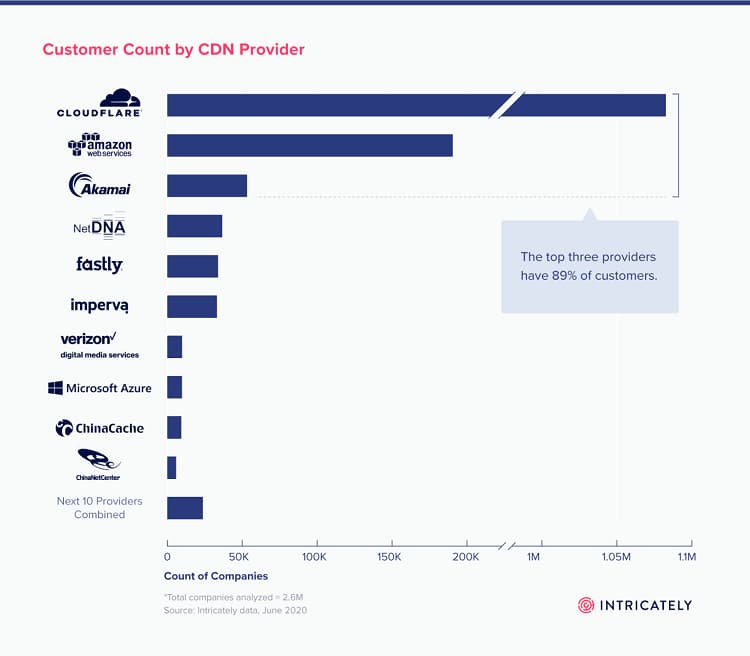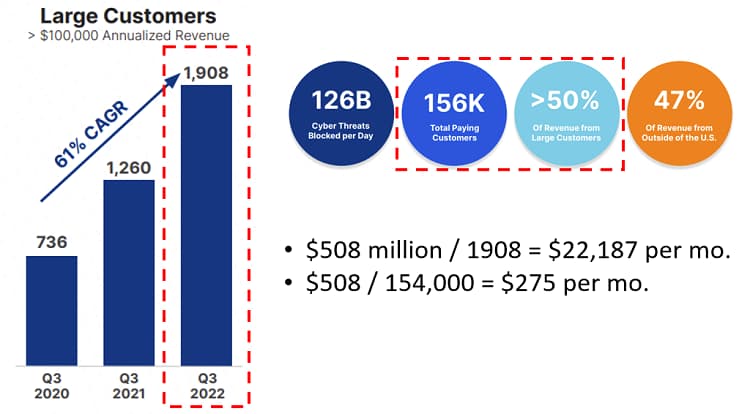Using a great product makes you want to invest in the product. When cannabis legalization started going mainstream outside of California, every stoner marijuana aficionado out there suddenly decided that weed stocks were the way forward. Popular brands enjoy the same benefit, and sometimes they’ll look to their customer base for funding where the most diehard customers would line up to invest. Similarly, stock analysts need to make sure product/service consumption doesn’t cloud their objectivity. People who hate a product, or perhaps hate the person selling the product, need to be careful about losing their objectivity when it comes to analyzing a company’s prospects. (See our piece on The Probability of Tesla Going Bankrupt.)
But if users of a product can provide unbiased feedback about their experiences, this can often inform others. For example, CB Insights is doing it with their Yardstiq platform which solicits feedback from users of B2B SaaS platforms. One B2B platform we’re using is Cloudflare (NET), a company that many paying subscribers have asked us to cover. Perhaps articulating our own use cases might be a good place to start.
Our Cloudflare Use Cases
Producing incredibly insightful content isn’t enough these days because you’re competing with clickbait drivel like what they churn out at the Fotley Mool. For investors to discover Nanalyze, we need content that bubbles to the top of search engines, which means speed matters. Cloudflare provides a distribution system of sorts that helps serve content to our global audience quickly via servers located across the globe.
We also regularly speak the truth about stonks, something that upsets large audiences of meme stock zealots, or perhaps starts affecting someone’s pump-and-dump operation, which means we get attacked in any number of ways. Again, Cloudflare provides a security layer between our hosting provider and the end users.
While these various features are a necessity, there are multiple ways to address these use cases. Given we’re working on a new website, we may evaluate other providers or methods during the process. After all, switching vendors is as simple as stopping the $50 a month payment on our corporate credit card.
Cloudflare’s Competitors
“A content delivery network (CDN) is a group of geographically distributed servers that speed up the delivery of web content by bringing it closer to where users are.” That’s according to Akamai (AKAM) a competitor of Cloudflare which – along with a 500-lb marketing gorilla – command around 89% of the entire CDN market.

Using a CDN is standard protocol for websites wanting to serve up content globally. Not surprisingly, the top-three players in this space also happen to be challengers and leaders in Gartner’s Magical quadrant for what they call web application and API protection platform (WAAP).

In looking at Gartner’s notes we see that Cloudflare has made a name for themselves in the small to medium business space while Amazon is leveraging their size and scale to target developers who may already be using the world’s largest cloud platform.
- Cloudflare – large base of small and midsize businesses (SMB) and personal customers helps feed its global threat intelligence to detect new attacks more quickly.
- Akamai – especially suited for organizations that have a broad and diverse portfolio of web applications and APIs. Excellent support. Midmarket enterprises often prefer a less expensive alternative.
- Amazon – suitable for clients looking for native controls, a platform approach, and vendor consolidation.
In a bear market, all businesses suffer, but the first to implode are the smallest. That’s one concern we have about Cloudflare, and the other is that their solution appears to fall short for larger customers in terms of support and usability. Akamai is said to be pricier, but with gross margins of 63%, they have room to start competing on cost. Even more so for Cloudflare which enjoys gross margins of 78%, which means commodity CDN services become a race to the bottom, and we’d bet on Amazon to win that race. Similar to the cybersecurity domain, CTOs want to reduce vendors to save money and reduce operational risk. Amazon’s focus on appealing to developers, not to mention their global leadership in cloud computing with a 32% market share, means they’re a formidable challenger in this space.
For any given domain, we always want to pick the leader(s), but even leadership doesn’t quite cut it when customers can easily switch between vendors.
The Stickiness of Cloudflare
Given our understanding of Cloudflare’s value proposition in the context of our own needs, there seem to be few barriers to switching providers. We’re on a monthly payments plan, and while we’re using some of their additional functions and features, none seem to embed themselves such that we’re concerned about switching to something else. It’s more like a “we need to do all these different housekeeping tasks, and we can do them in a single location so having less vendors is great” value proposition. Whether we continue using the platform will be a decision our developers make, but it makes us wonder how many other customers out there might not have much allegiance to Cloudflare’s solution?
If Cloudflare were a typical Software-as-a-Service (SaaS) company, their customers would be secured with multi-year contracts rather than pay-as-you-go. That’s only the case for some of the company’s 156,000 customers, of which 1,908 pay more than $100,000 a year. Around half of Cloudflare’s revenues come from this high-paying cohort, which means that over 98% of their customer base pays – on average – around $275 a month.

Net retention rate (NRR) – an indicator of increasing customer spending over time – is around 124% which means Cloudflare’s larger customers are spending more as time goes on. Some percentage of that growth also come from smaller customers, and we’ve noticed that they’re constantly releasing new features in an attempt to increase our spend. Unfortunately, their disorganized UI, and lack of a central “control room” dashboard, means we’ve have a hard time knowing what we’re actually making use of at any given time and what the benefits of added functionality might be.
Would We Buy Cloudflare Stock?
Strong gross margins mean Cloudflare is in no danger of surviving as they can cut back on overhead to achieve profitability when needed. Providing a commodity product in the face of strong competition means they’ll need to keep adding features and pricing their product to match their competitors which could put pressure on those juicy margins. We prefer to invest in companies that are servicing “blue ocean total addressable markets” where they’re providing an innovative service or solution that isn’t already offered. Ideally, it’s one that save companies money.
If we were bullish on the CDN thesis, our next step would be to compare Cloudflare to Akamai. Both companies are about the same size – a $14 billion market cap) – but the latter commands a lot more revenue that appears to be growing at a slower rate than Cloudflare.

We also need to seriously consider Amazon’s dominance in cloud computing which will afford them the ability to sell a solution used internally. As the bear market takes ahold of companies big and small, a shakeout will take place where many small businesses will go bankrupt while surviving companies look to control costs. Could Amazon run their offering as a loss leader in hopes of capturing cloud business in the future? There are too many cons and not enough pros which means we’re avoiding Cloudflare stock going forward.
Conclusion
When hiring manager vet large pools of well-qualified candidates, they’re looking for reasons to eliminate contenders as opposed to cherry picking winners. When selecting companies to invest in, our approach is no different. There is no shortage of quality SaaS firms out there to invest in (29% of the disruptive tech stocks we hold are “pure SaaS,” 13% are “some Saas”). Cloudflare has some formidable competition to contend with including one of the world’s largest cloud infrastructure provider.
Tech investing is extremely risky. Minimize your risk with our stock research, investment tools, and portfolios, and find out which tech stocks you should avoid. Become a Nanalyze Premium member and find out today!



Be the first to comment